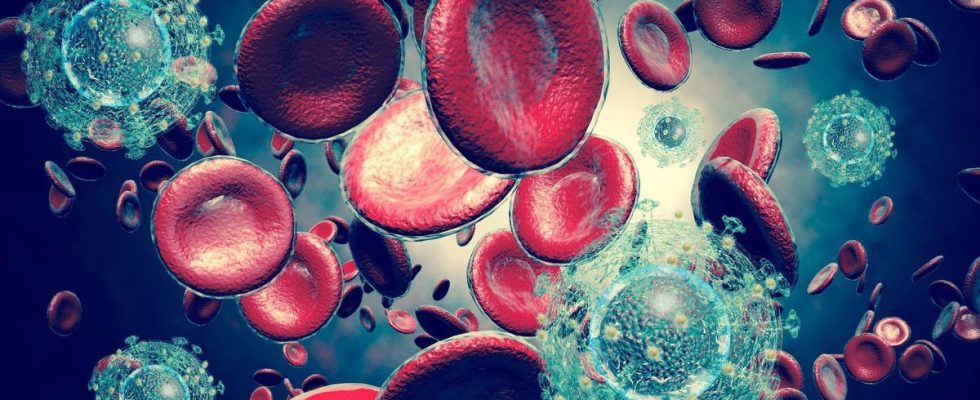Published on
Updated
Reading 3 min.
Based on the “Crispr-Cas9” genetic scissors technique, Dutch researchers claim to have succeeded in eliminating HIV from infected cells. The hope of treating HIV is considered even if many steps still remain to be taken.
At the European Congress of Clinical Microbiology and Infectious Diseases, a team of researchers in the Netherlands shows how the latest gene-editing technology CRISPR-Cas can be used to remove all traces of HIV from infected cells in the laboratory, sparking thus the hope of a cure for HIV.
A cure for HIV using genetic scissors?
CRISPR-Cas gene editing technology acts like genetic scissors, capable of precisely targeting an area to cut it and replace it if necessary with another: a brilliant genetic cut and paste which has earned its inventors, Jennifer Doudna and Emmanuelle Charpentier, the Nobel Prize in Chemistry in 2020. This action facilitates either the deletion of unwanted genes or the introduction of new genetic material into an organism’s cells, paving the way for advanced genetic therapies.
And it was natural that this tool would be used against HIV, which has the ability to integrate its genome into the host’s DNA at the level of immune cells, making it extremely difficult to eliminate. Today, many antiviral drugs can treat the infection, but they require lifelong use because HIV can rebound from “reservoirs” when treatment is stopped.
The researchers’ goal is thus to develop a robust and safe CRISPR-Cas combinatorial regimen, striving to achieve an inclusive “HIV cure for all” that can inactivate diverse strains of HIV in various cell types and tissues in the body.
Effective on infected cells hidden in “reservoirs”
To do this, they combined these molecular scissors (CRISPR-Cas) and two targets: “conserved” HIV sequences, parts of the virus genome which remain the same in all known strains of HIV. By focusing on these conserved sections, the goal is to have a broad-spectrum therapy that can effectively combat all variants of HIV. But to transport this targeted missile, the researchers encountered a first difficulty: having a vehicle (called a “vector”) towards the infected cells that was not too large. After various tests, they had two teams capable of reaching infected CD4+ T lymphocytes: saCas9 and cjCas.
SaCas9 showed exceptional antiviral performance, managing to completely inactivate HIV from infected cells. Additionally, these results were also successful with “hidden” HIV reservoir cells by focusing on specific proteins present on the surface of these cells (CD4+ and CD32a+).
A “proof of concept” or a crucial breakthrough?
“These results represent a crucial step forward towards the design of a healing strategy” declare the authors in a press release.
For the moment, this is mainly a proof of concept on in vitro cells, which will not lead to a cure for HIV tomorrow. The authors themselves recognize this: “Our next steps consist of optimizing the route of administration to target the majority of HIV reservoir cells (…) and avoid delivery into non-reservoir cells. This strategy aims to make this system as safe as possible for future clinical applications. We hope to achieve the right balance between effectiveness and safety of this CURE strategy. Only then can we consider clinical trials in humans to deactivate the HIV reservoir. Although these preliminary results are very encouraging, it is premature to declare that there is a working cure for HIV on the horizon“.
It remains to be demonstrated that these results obtained on cells in vitro can be reproduced on an entire organism, without affecting uninfected cells. Many other steps in animals will be necessary to demonstrate efficacy and safety compatible with human trials.
Finally, other teams are working on the use of genetic scissors against HIV, including the firm Excisions Biotherapeutics. We reported on their results in September 2022. Since then, the firm has launched its preliminary trial (phase 1:2) in humans.
